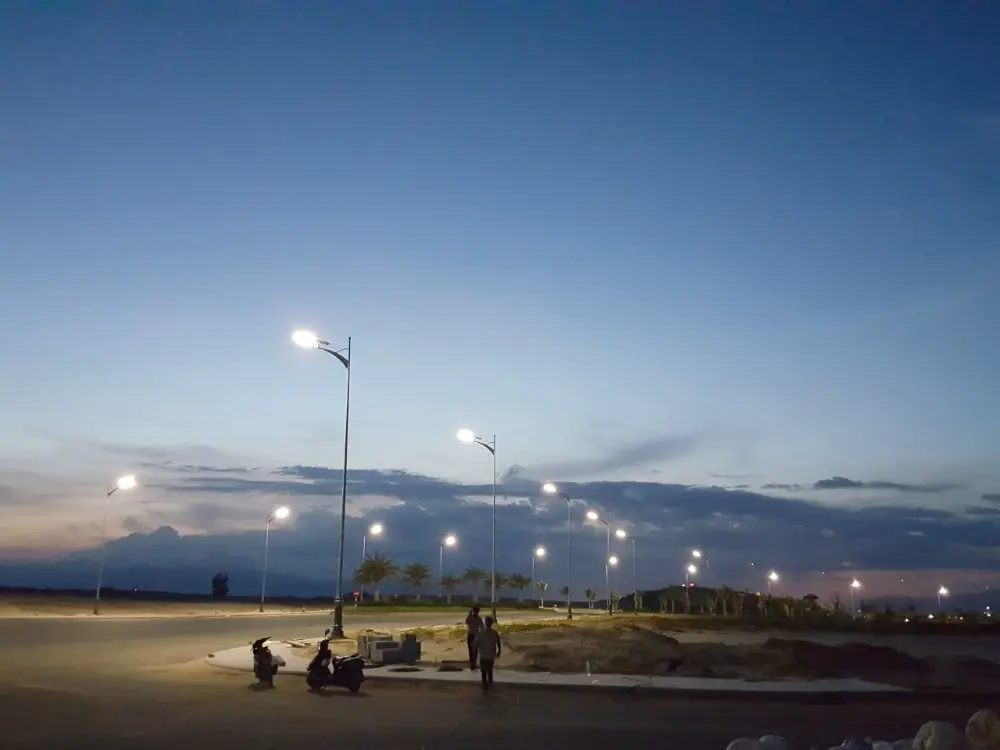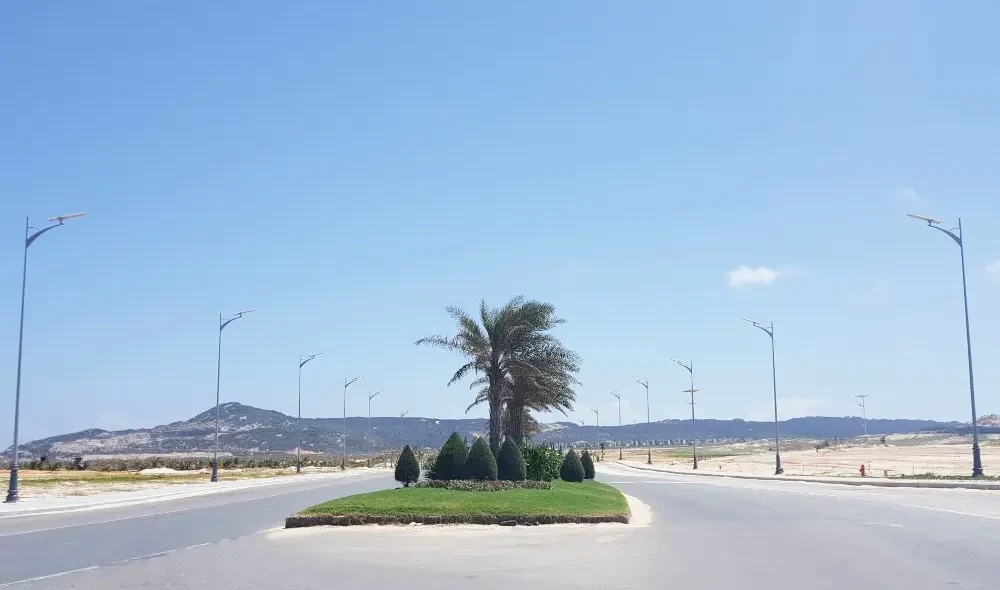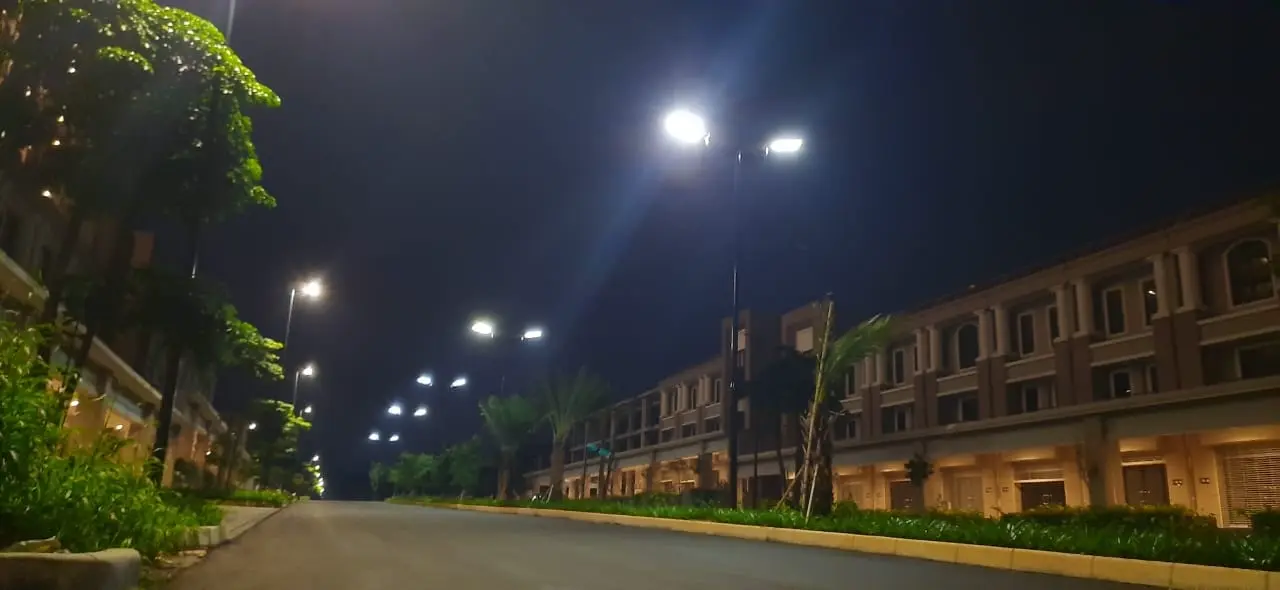With a global emphasis on sustainable development, solar energy, a clean and renewable energy source, is gradually permeating every aspect of our lives. In urban lighting, solar street lights have become a vital link between green ecology and modern cities due to their unique advantages. This article explores the innovation and development of solar street lights from the perspectives of design aesthetics, functionality, and environmental harmony, supported by specific data and case studies, to reveal the infinite charm of this green lighting solution.

Design Aesthetics of Solar Street Lights
- The Value of Design Aesthetics
In today’s rapidly urbanizing world, a city’s landscape has become a significant part of its image. As a crucial element of city streets, the design aesthetics of solar street lights go beyond visual appeal, embodying the city’s cultural heritage and modern aesthetic concepts. Thoughtful design can transform solar street lights into a striking city feature, enhancing the overall image of the city and the happiness of its residents.
Analysis of Design Elements
- Morphological Innovation: Modern solar street light designs pursue diversified forms and smooth lines, such as streamlined and bionic designs, which follow aerodynamic principles and add an artistic touch. For example, a city adopted “lotus light” modeled solar street lights, inspired by the natural beauty of blooming lotuses. When lit at night, these lights resemble blooming lotuses on the streets, creating a beautiful scene.
- Color Matching: Color is the first language of vision. The color design of solar street lights should harmonize with the surrounding environment, highlighting their unique features while avoiding color clashes. For instance, warm lights create a cozy atmosphere, while retro colors in historical and cultural neighborhoods enhance the cultural heritage.
- Material Selection: High-quality materials ensure the durability of street lights and enhance their overall aesthetic. For example, using corrosion-resistant, anti-aging aluminum alloy with transparent or semi-transparent high-transmittance lampshades ensures beauty and practicality.
Functional Design of Solar Street Lights
- Basic Function Overview
The primary function of solar street lights is to utilize solar energy for photovoltaic conversion, providing power for night lighting without external power supply. This reduces the burden on the power grid and lowers operating costs. Solar street lights also feature intelligent control functions, such as automatic light switching and brightness adjustment, to meet the lighting needs of various scenarios.
- Intelligent Upgrades
With the development of IoT technology, solar street lights are becoming more intelligent. By installing sensors, wireless communication modules, and other equipment, functions like remote monitoring, fault warning, and data collection are realized. For example, an intelligent solar street light system in a city can automatically adjust brightness according to the flow of people and traffic, ensuring optimal lighting and maximizing energy utilization.
- Combination of Aesthetics and Function
The design of solar street lights integrates aesthetics and functionality perfectly. Thoughtful design makes street lights a part of the cityscape, enhancing the city’s overall aesthetics. Simultaneously, intelligent and efficient functional design ensures effective night lighting and public safety. This dual attribute makes solar street lights an ideal choice for modern urban lighting.
Solar Street Lights in Urban Environments
- Strong Adaptability
Solar street lights, which do not require cables and are flexible in installation, adapt well to various terrains and environments. They are suitable for bustling commercial neighborhoods and remote country lanes, making them a preferred solution for urban lighting transformation.
- Energy Saving and Emission Reduction
Compared to traditional street lights, solar street lights offer significant energy savings and emission reductions. Statistics show that a medium-sized city could save millions of kilowatts of electricity and reduce significant carbon dioxide emissions annually if all streetlights were solar-powered. This alleviates the urban heat island effect and brings substantial environmental benefits to the city.
Solar Street Lights and Urban Night Lighting
- Display of Lighting Art
Solar street lights are not only lighting tools but also artistic carriers of urban night landscape lighting. Through reasonable lighting layout and color matching, they can create colorful lighting effects, such as light and shadow interplay, adding infinite charm to the city’s night scene. For example, high-pole solar street lamps in a city’s key areas use LED light sources with programmable lighting changes to create a fantastic nightscape effect.
- Harmonious Symbiosis with Urban Landscape
The design of solar street lights should consider harmonious integration with the urban landscape. In historical and cultural neighborhoods, retro-style solar street lights can be used, while modern commercial areas may opt for fashionable, simple designs. Through thoughtful layout and design, solar street lights become part of the urban landscape, enhancing the city’s overall image.
Environmental Harmony in Design
- Eco-Friendly
Solar street lights use clean energy, generating no pollution or noise, and are ecologically friendly. Their installation process does not require the destruction of vegetation or excavation of road surfaces, effectively protecting the city’s green spaces and ecosystem.
- Light Pollution Control
Light pollution is a significant issue in modern urban lighting. Solar street lights should focus on controlling light pollution through the use of cut-off and semi-cut-off lamps, reasonable light layout, and brightness adjustment to reduce light diffusion and glare, protecting residents’ eye health.
Case Studies: Successful Solar Street Light Designs

1.Installation on a Highway in Vietnam
In Vietnam, a rapidly developing country, infrastructure development, particularly road lighting, is crucial. To improve nighttime driving safety and road aesthetics, a local government introduced efficient, environmentally friendly solar street light systems. Among many brands, Sresky’s Atlas series streetlights gained acclaim for their simple yet modern design, streamlined appearance, and features like anti-corrosion, dustproofing, and waterproofing, which suit Vietnam’s varied climatic conditions.
- Installation Effect
Sresky’s Atlas series streetlights create a bright landscape on Vietnam’s highways, improving road lighting quality and reducing power failure incidents. They provide a safer, more comfortable environment for vehicles and pedestrians.

2.Installations Outside Buildings in Urban Areas in Indonesia
- Project Background
In Indonesia, a major Southeast Asian economy, urbanization is accelerating, with numerous high-rise buildings emerging. Enhancing urban night scene lighting has become urgent. A well-known Indonesian developer installed solar streetlights outside its new high-rise buildings to improve nighttime visual effects and safety. Sresky’s Atlas series streetlights were chosen for their excellent performance and simple design.
- Customized Design
Sresky provided customized Atlas street light solutions to meet the specific needs of Indonesian urban building facades. These streetlights retained their energy efficiency and longevity, featuring a double head mounting design to better integrate into the building environment and enhance overall aesthetics.
- Installation Effect
The successful installation of Atlas streetlights on Indonesian urban buildings has added color to the city’s nightscape, improving building safety and visibility. The project’s success offers a useful reference for night lighting of high-rise buildings elsewhere in Indonesia.
The Future Trend of Solar Street Lights
- Continuous Technological Innovation
With technological progress, solar street light technology will continue to innovate. Future improvements in solar cell conversion efficiency will shorten charging times and enhance endurance. LED light sources will be optimized for higher efficiency, longer life, and lower energy consumption. Additionally, IoT, big data, and AI technologies will be more widely used, promoting solar street lights towards more intelligent, personalized directions.
- The Concept of Green Low-Carbon is Deeply Rooted
As global concern for climate change deepens, the green low-carbon concept will gain popularity. As a representative of green lighting, solar street lights will be favored by more countries and regions. Governments will introduce supportive policies to encourage solar streetlight promotion and application, while enterprises will increase R&D investments to continuously launch more environmentally friendly and efficient solar streetlight products.
As a green and sustainable lighting solution, solar street lights are gradually becoming crucial in urban lighting. Their unique design aesthetics, efficient functionality, harmonious environmental integration, and significant energy-saving and environmental protection advantages make solar street lights an ideal choice for modern urban lighting. With continuous technological progress and policy support, the future of solar street lights is bright. We can expect them to play a more significant role in urban development, contributing to sustainable city growth. We also look forward to more innovative designs and applications emerging, promoting the prosperity and development of the solar street light industry.